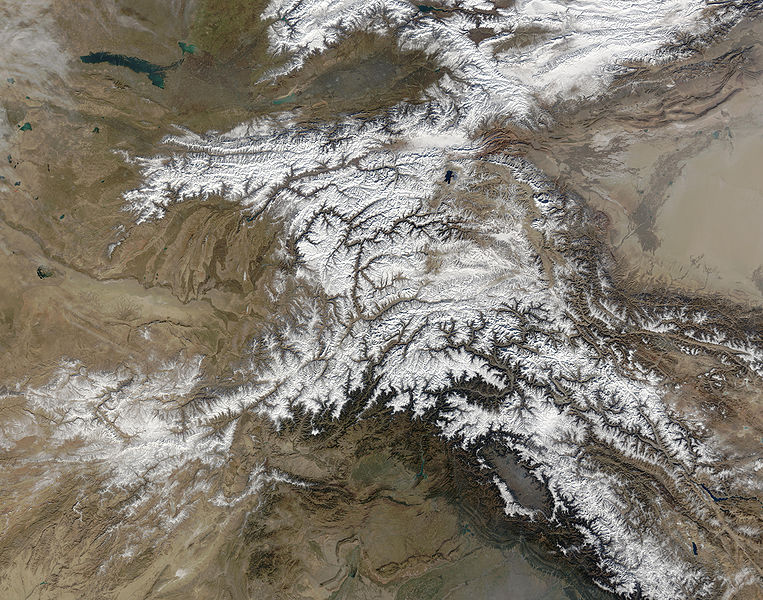Wêne:Hindu Kush satellite image.jpg

Mezinahiya vê pêşdîtinê: 763 × 600 pîksel. Resolusyonên din: 306 × 240 pîksel | 611 × 480 pîksel | 978 × 768 pîksel | 1280 × 1006 pîksel | 2560 × 2011 pîksel | 5600 × 4400 pîksel.
Dosyeya orjînal (5600 × 4400 pixel, mezinbûnê data: 5,01 MB, MIME-typ: image/jpeg)
Dîroka daneyê
Ji bo dîtina guhartoya wê demê bişkoka dîrokê bitikîne.
| Dîrok/Katjimêr | Wêneyê biçûk | Mezinahî | Bikarhêner | Şirove | |
|---|---|---|---|---|---|
| niha | 04:39, 6 hezîran 2006 |  | 5600 x 4400 (5,01 MB) | Avenue | {{Information |Description=The Hindu Kush occupies the lower-left-center of this true-color MODIS satellite image, acquired 28 November 2003. |Source=[NASA's Earth Observatory http://earthobservatory.nasa.gov/Newsroom/NewImages/images.php3?img_id=16411] | |
Bikaranîna pelê
Rûpelekî ku ji vê dosyeyê bi kar tîne nîne.
Bikaranîna gerdûnî ya pelê
Ev wîkiyên di rêzê de vê pelê bi kar tînin:
- Bikaranîna di bcl.wikipedia.org de
- Bikaranîna di bn.wikipedia.org de
- Bikaranîna di ca.wikipedia.org de
- Bikaranîna di el.wikipedia.org de
- Bikaranîna di en.wikipedia.org de
- Bikaranîna di es.wikipedia.org de
- Bikaranîna di et.wikipedia.org de
- Bikaranîna di eu.wikipedia.org de
- Bikaranîna di fa.wikipedia.org de
- Bikaranîna di fi.wikipedia.org de
- Bikaranîna di it.wikipedia.org de
- Bikaranîna di mk.wikipedia.org de
- Bikaranîna di ml.wikipedia.org de
- Bikaranîna di mr.wikipedia.org de
- Bikaranîna di nl.wikipedia.org de
- Bikaranîna di nn.wikipedia.org de
- Bikaranîna di pa.wikipedia.org de
- Bikaranîna di pl.wikipedia.org de
- Bikaranîna di pnb.wikipedia.org de
- Bikaranîna di pt.wikipedia.org de
- Bikaranîna di ro.wikipedia.org de
- Bikaranîna di sk.wikipedia.org de
- Bikaranîna di sl.wikipedia.org de
- Bikaranîna di sr.wikipedia.org de
- Bikaranîna di ta.wikipedia.org de
- Bikaranîna di tg.wikipedia.org de
- Bikaranîna di th.wikipedia.org de
- Bikaranîna di uz.wikipedia.org de
- Bikaranîna di vi.wikipedia.org de

